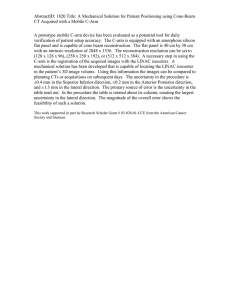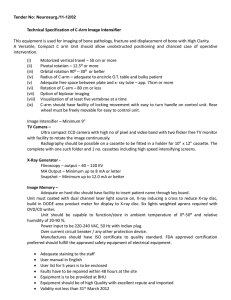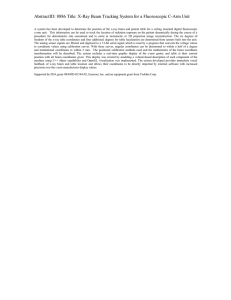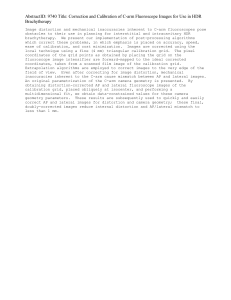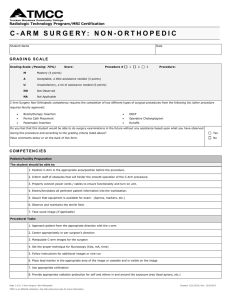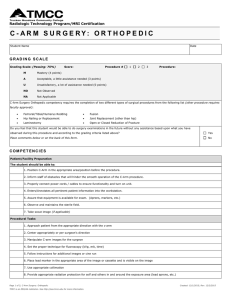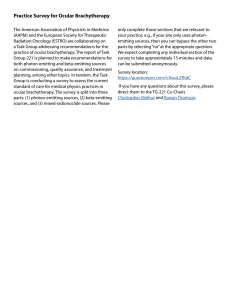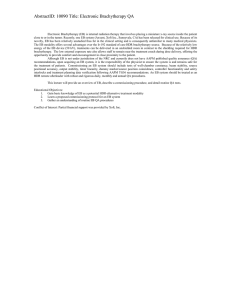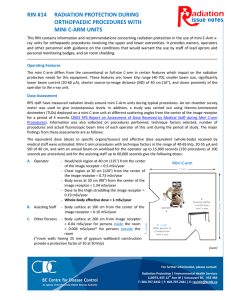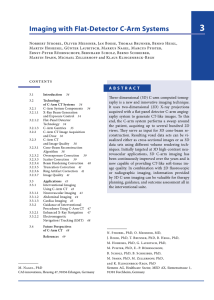AbstractID: 7995 Title: The Use of C-Arm Fluoroscopy for Treatment... Dose Rate Brachytherapy
advertisement
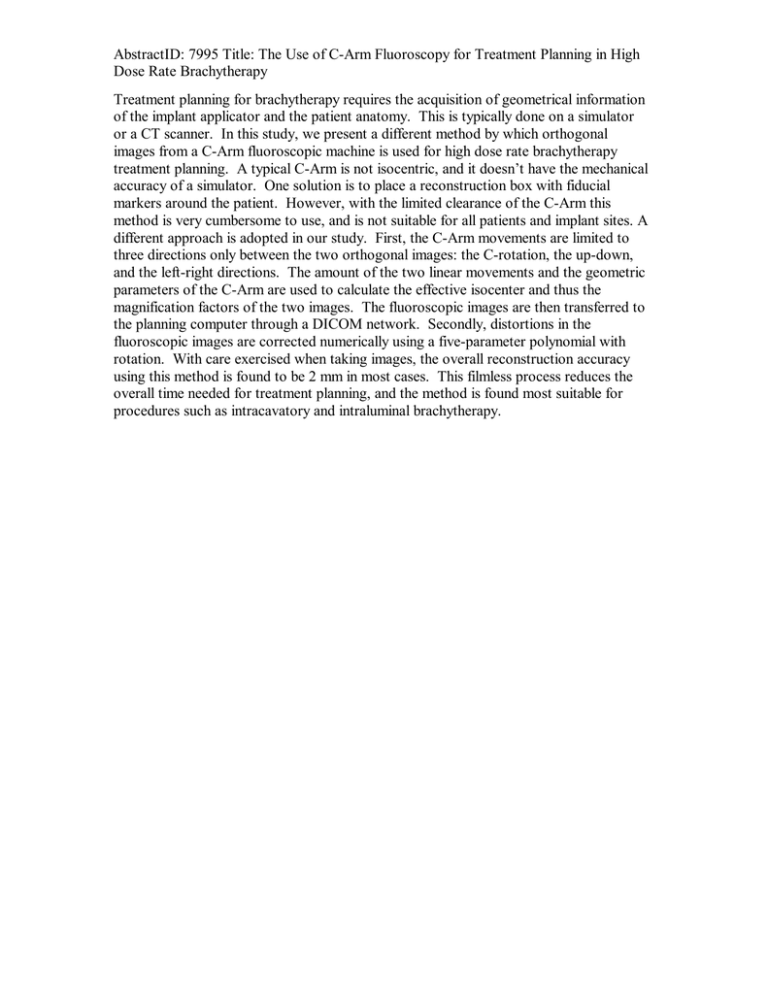
AbstractID: 7995 Title: The Use of C-Arm Fluoroscopy for Treatment Planning in High Dose Rate Brachytherapy Treatment planning for brachytherapy requires the acquisition of geometrical information of the implant applicator and the patient anatomy. This is typically done on a simulator or a CT scanner. In this study, we present a different method by which orthogonal images from a C-Arm fluoroscopic machine is used for high dose rate brachytherapy treatment planning. A typical C-Arm is not isocentric, and it doesn’t have the mechanical accuracy of a simulator. One solution is to place a reconstruction box with fiducial markers around the patient. However, with the limited clearance of the C-Arm this method is very cumbersome to use, and is not suitable for all patients and implant sites. A different approach is adopted in our study. First, the C-Arm movements are limited to three directions only between the two orthogonal images: the C-rotation, the up-down, and the left-right directions. The amount of the two linear movements and the geometric parameters of the C-Arm are used to calculate the effective isocenter and thus the magnification factors of the two images. The fluoroscopic images are then transferred to the planning computer through a DICOM network. Secondly, distortions in the fluoroscopic images are corrected numerically using a five-parameter polynomial with rotation. With care exercised when taking images, the overall reconstruction accuracy using this method is found to be 2 mm in most cases. This filmless process reduces the overall time needed for treatment planning, and the method is found most suitable for procedures such as intracavatory and intraluminal brachytherapy.
